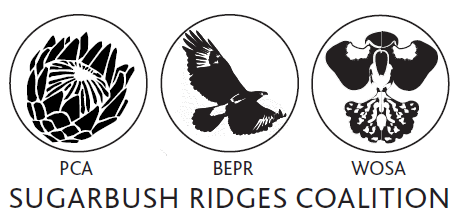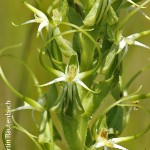Habenaria
The genus Habenaria is a large genus consisting of 839 species and is found worldwide in tropical and subtropical regions. Of these 30 species are found in South Africa with a further 209 species found in the rest of Africa. If the species has only one or two leaves, these are pressed flat to the ground. Otherwise the leaves grow alternately up the stem. The inflorescence is terminal with mostly green to white flowers - often inconspicuous among the grasses in grassland. Dorsal sepal normally fused to the upper petal lobes with slender lower petal lobes and lip lobes. Similar in flower structure to Bonatea. Species have been known to colonise disturbed road verges. Most species have a distinct dormant period and plants have round to oval tuberoids, some species with tuberoids the size of potatoes.
Credit
Johnson, S.D., Bytebier, B., Stärker, H. (2010). Orchids of South Africa: A field guide. Struik Nature, Cape Town, South Africa.
Habenaria cornuta
Description
Fairly robust terrestrial, up to 600mm tall. Leaves numerous, cauline, elliptic to narrowly spear-shaped, up to 100mm long. Inflorescence fairly dense, 8-20 flowers, which are green. Sepals up to 16mm long, median deflexed, laterals somewhat rolled up lengthwise. Petals divided, lower lobe curving upward like a horn, up to 45mm long, upper lobe erect, linear, up to 15mm long. Lip 3-lobed, up to 19mm long, with lobes almost equal, spur twisted once and inflated apically, up to 25mm long. Similar to Habenaria clavata, but has inconspicuous green stigmatic arms, sorter spur and the lower petal lobes that touch or cross over one another.
For more information regarding the preservation of South Africa's wild Orchids or if you would like to get involved please email This email address is being protected from spambots. You need JavaScript enabled to view it. or complete this short form Contact Us and we will contact you.


